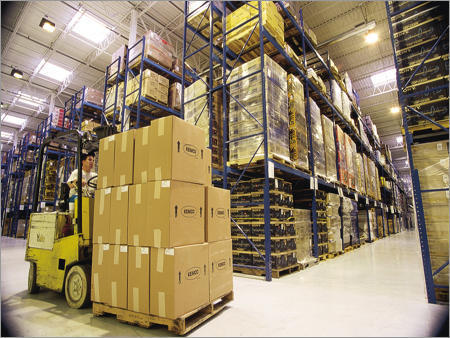
Warehousing Services in India: How to Optimize Storage and Distribution
Introduction to Warehousing Services in India
The world of logistics is rapidly evolving, and India is at the forefront of this transformation. With a burgeoning economy and an increasing demand for efficient supply chain solutions, warehousing services in India have become more crucial than ever. Businesses are recognizing that effective storage and distribution can significantly impact their bottom line.
Imagine a vast network of warehouses equipped with cutting-edge technology, strategically located to meet the diverse needs of different industries. This landscape provides not just space but also innovative solutions tailored to optimize operations. As companies strive for seamless inventory management and swift delivery timelines, understanding how to navigate these warehousing services becomes essential.
Whether you're a small startup or an established enterprise, leveraging the right warehousing strategies can propel your business forward in today's competitive market. Let's delve deeper into what makes warehousing services in India unique and explore practical ways to enhance your storage and distribution processes.
Key Features of Indian Warehousing Solutions
Indian warehousing solutions offer a variety of features tailored to meet diverse business needs. Flexibility stands out as a crucial element, allowing businesses to scale operations according to demand.
Space optimization is another key aspect. Modern warehouses utilize advanced designs and layouts that maximize storage capacity while minimizing costs.
Additionally, security is paramount. Indian warehouses are equipped with state-of-the-art surveillance systems and controlled access points, ensuring the safety of goods stored within.
Moreover, many facilities provide temperature-controlled environments. This feature is essential for industries such as pharmaceuticals and food services where product integrity must be maintained.
Accessibility also plays a vital role. Proximity to major transportation hubs facilitates efficient logistics and distribution networks, reducing delivery times significantly.
Regulatory compliance in India ensures that warehousing practices align with industry standards, enhancing operational reliability across sectors.
Choosing the Right Warehouse Location
Choosing the right warehouse location is crucial for optimizing your logistics operations. Proximity to major transportation hubs can significantly reduce shipping times and costs.
Consider the accessibility of road networks, railways, and ports. A strategic position allows for smoother distribution channels, ensuring that products reach customers swiftly.
Demographics also play a role. Analyzing regional demand helps in selecting a site that caters effectively to your target market.
Additionally, evaluate local regulations and labor availability. Some areas may offer tax incentives or have a skilled workforce ready to meet your operational needs.
Assess competition in the region. Understanding competitors' locations can provide insights into market saturation and help identify potential advantages you might leverage.
Technological Advancements in Storage Management
Technological advancements are revolutionizing storage management in India’s warehousing landscape. Automation is at the forefront, streamlining operations and reducing human error. Automated guided vehicles (AGVs) transport goods efficiently within warehouses, allowing for faster processing times.
Another significant development is the integration of artificial intelligence (AI). AI systems analyze inventory trends and predict demand fluctuations. This helps businesses optimize stock levels and reduce holding costs.
Cloud-based inventory management solutions offer real-time visibility into stock positions across multiple locations. Companies can track items seamlessly from any device, enhancing decision-making capabilities.
Additionally, the use of Internet of Things (IoT) devices enables smart monitoring of equipment and environmental conditions. This ensures product quality while minimizing losses due to spoilage or damage.
These technologies not only enhance efficiency but also provide a competitive edge in today's fast-paced market. Embracing innovation is crucial for growth in warehousing services throughout India.
Strategies for Efficient Inventory Control
Efficient inventory control is the backbone of successful warehousing services in India. An effective strategy begins with accurate demand forecasting. By analyzing sales trends and seasonal fluctuations, businesses can better anticipate their stock needs.
Implementing a robust tracking system helps monitor inventory levels in real-time. This visibility reduces the risk of overstocking or stockouts, ensuring that products are available when needed without incurring unnecessary costs.
Adopting just-in-time (JIT) inventory management can also streamline operations. JIT minimizes holding costs by receiving goods only as they are needed for production or sales.
Regular audits play a crucial role too. Conducting routine checks allows companies to identify discrepancies early on and adjust their strategies accordingly.
Fostering strong relationships with suppliers enhances communication and improves response times during unexpected demand spikes or supply chain disruptions.
Cost-Effective Distribution Methods in India
Cost-effective distribution methods are crucial for businesses looking to thrive in India's competitive landscape. One of the most popular strategies involves leveraging local courier services. These companies often provide flexible pricing and quick delivery times, making them ideal for small to medium-sized enterprises.
Another approach is utilizing rail freight. With India’s extensive railway network, transporting goods via trains can significantly reduce costs compared to road transport, especially over long distances.
Additionally, outsourcing logistics to third-party providers helps manage expenses effectively. These firms have established networks and expertise that can streamline operations while minimizing overheads.
Adopting a hub-and-spoke model allows companies to optimize their routes efficiently. By consolidating shipments at central locations before distributing them locally, businesses can save on fuel and labor costs while ensuring timely deliveries across regions.
Enhancing Your Warehousing Efficiency
Enhancing warehousing efficiency involves a combination of smart strategies and innovative practices. Start by embracing automation. Implementing automated systems can reduce manual labor, speed up operations, and minimize errors.
Regular training is crucial for staff members. Well-trained employees are more productive and can adapt to new technologies quickly. Encourage continuous learning to keep them updated on best practices.
Streamline your inventory processes with real-time tracking systems. This approach allows you to monitor stock levels accurately, reducing the chances of overstocking or stockouts.
Optimize warehouse layout as well. A well-organized space ensures that products move smoothly from receiving to shipping areas. Consider using vertical space effectively by investing in sturdy shelving units.
Regularly assess performance metrics like order accuracy and turnaround time. Analyzing these figures helps identify bottlenecks and enables informed adjustments for improved workflow.